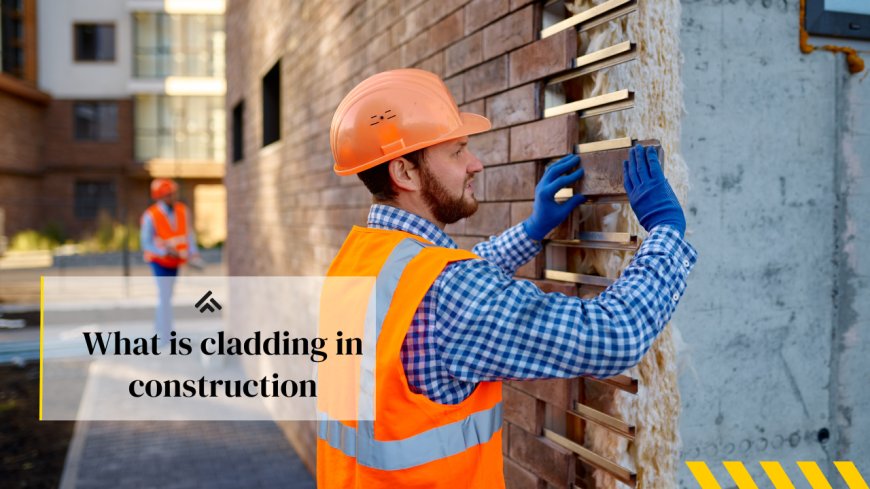What is cladding in construction
Cladding is a crucial element in modern construction. It involves applying one material over another to provide a skin or layer. This exterior layer serves multiple purposes.
Cladding is a crucial element in modern construction. It involves applying one material over another to provide a skin or layer. This exterior layer serves multiple purposes.
It protects the underlying structure from weather and environmental conditions. Additionally, it can enhance the aesthetic appeal of a building. Cladding materials include wood, metal, brick, and composite materials. Evolving technologies continue to improve their performance and durability.
Types of Cladding Materials
Several options exist for cladding. Wood is a popular choice due to its natural look. It requires regular maintenance to prevent decay. Metal cladding is durable and provides a modern appearance. It resists weather and impacts well.
Brick cladding is traditional and offers good insulation. It is low-maintenance and lasts long. Composite materials combine the benefits of different materials. They offer versatility and lower maintenance. Construction Estimating Services improve can help in choosing the right material, considering budget and requirements. Each type brings unique advantages to the table.
Benefits of Cladding
Cladding enhances a building's thermal insulation. It helps regulate indoor temperatures by adding an extra layer of protection. This can lead to significant energy savings. The structure stays cooler in summer and warmer in winter.
It also increases the building’s visual appeal. Various materials and designs can create unique looks. Cladding materials can mimic stone, wood, or other textures. This adds to the aesthetic versatility and increases property value. Different cladding types offer various benefits for durability and upkeep.
Installation Process
The installation of cladding starts with preparing the building surface. This involves cleaning and ensuring it is dry and smooth. Any imperfections need repair. The next step is setting up a frame or support structure. The type of frame depends on the cladding material used.
Once the frame is in place, cladding panels or pieces are fixed to it. Fasteners like nails, screws, or adhesives secure the material. Correct alignment is key for uniformity and durability. Sealing joints prevent water ingress and improve thermal efficiency. Inspections ensure quality and adherence to specifications.
Maintenance of Cladding
Proper upkeep is essential to extend the life of cladding. Regular inspections help identify any damage or wear. Cleaning the cladding surface prevents the buildup of dirt and pollutants. Each material has specific cleaning requirements. Adhering to these ensures the material's longevity.
Repairs should be performed promptly to address minor issues before they escalate. Repainting or re-treating may be required, especially for wood cladding. Routine maintenance not only preserves aesthetic appeal but also maintains the cladding's protective functions. Regular care helps in retaining the performance and appearance of the building’s exterior.
Common Issues with Cladding
One common problem is moisture infiltration. Water can seep through cracks or poorly sealed joints. This can lead to mold growth and structural damage. Moisture issues are particularly prevalent in wood cladding. Regular maintenance and proper sealing can mitigate these problems.
Another issue is thermal expansion and contraction. Frequent temperature changes cause cladding materials to expand and contract. This can lead to warping or cracking over time. Metal and composite materials are more prone to this. Ensuring proper installation with room for movement helps. Routine inspections can catch these issues early.
Advancements in Cladding Technology
New advancements have significantly improved cladding technology. Modern materials now offer better durability and performance. These innovations enhance the resistance to weather and environmental factors. Many new materials are also more sustainable and eco-friendly. They often use recycled content or are designed for easy recycling after use.
Additionally, manufacturing techniques have advanced. Precision engineering and custom designs are more accessible. These improvements allow for intricate patterns and textures. They also reduce waste and lower production costs. Technological advances have made installation easier and faster. Enhanced fastening systems and pre-fabricated panels are key developments.
Environmental Impact of Cladding
Cladding can both positively and negatively affect the environment. Modern cladding materials often incorporate recycled content, reducing the need for virgin resources. Some cladding options improve a building's energy efficiency, lowering energy consumption and greenhouse gas emissions.
Conversely, the production and disposal of certain cladding materials can have adverse environmental effects. Manufacturing processes may generate emissions and waste. Some materials are difficult to recycle at the end of their life cycle, contributing to landfill. Therefore, choosing sustainable cladding is crucial for minimizing environmental impact.
Regulations and Standards
Regulations and standards ensure that cladding installations are safe and effective. Compliance with these rules guarantees the structural integrity and fire safety of buildings. They set guidelines for materials, methods, and quality checks. Adhering to these standards helps avoid future issues.
Regulations also focus on environmental impact and sustainability. They encourage using eco-friendly materials and practices. Builders must comply with local and international codes. This includes energy efficiency and minimizing pollution. Ensuring adherence to these standards reduces long-term risks and promotes responsible construction.
Cost Considerations
Cost considerations are crucial when selecting cladding. Material costs vary widely, from affordable vinyl to premium natural stone. Labor expenses also differ based on installation complexity and region. Budgeting for these costs ensures financial planning aligns with the project's scope.
Beyond initial expenses, factor in long-term costs. Maintenance, repairs, and potential replacements can add up over time. Energy savings from improved insulation might offset some costs. Weighing these elements helps in making an informed decision. Balancing upfront and ongoing expenses is key to finding the right cladding solution.
To read more articles visit Joripress
Conclusion
In conclusion, choosing the right cladding involves several considerations. It's important to balance aesthetics, durability, and cost. This ensures the investment enhances both the appearance and protection of the building. Regular maintenance protects the cladding's longevity and functionality.
Advancements in technology and materials have improved cladding options. Sustainable choices are increasingly available. These innovations support environmental goals. Adhering to regulations ensures compliance and safety. Proper assessment and planning result in a successful, long-lasting cladding installation.

 alonleo
alonleo 











